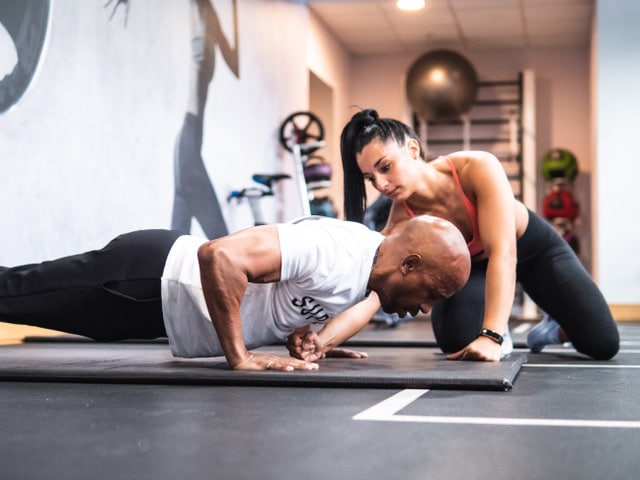YOU ARE THE only one who knows how your workout went. Listen to your body, and don’t force yourself to exercise despite the discomfort. Pay special attention to personal risk areas, such as damaged knees or a chronic back condition.
Your age can affect your risk of injury, so you may need to modify your training programme to accommodate your changing physique.
Gender can also play a role in your body’s distinct responses. For women, the rate of injury is slightly higher. Runner’s knee, stress fractures, shin splints and plantar fasciitis are all injuries that are more common with female runners.
Workouts involving many planes of motion, such as yoga, stair-stepping machines, or cycling, on the other hand, may put men at risk of injury.
Small Steps
Don’t expect to breeze right into the gym doing what you previously did. You are no longer in your best shape, and trying to prove otherwise will give you an injury on your first day back.
Play it safe and start slowly with lower weights and less intensity. Training is a marathon, not a sprint; give yourself time to strengthen your body’s connective tissues and increase the resistance capacity.
With a thought-out conservative approach, you will provide your body the time it needs to adjust and adapt to the stresses you’re placing upon it.
The First Two Weeks
The initial beginning phase is crucial as you start to work your entire body and re-train your neural pathways. Start with weights at least 50 percent lower than you used before.
You can adjust this upward as things get easier. After four to six weeks, your body should be feeling a lot like its former self—a point when you can consider the transition to heavier weights.
Postural alignment
On a day-to-day basis, people have poor postural alignment. Poor posture was made worse by people spending more time at home during furlough days.
Poor posture weakens your entire musculoskeletal structure. To combat this, stand tall, make sure you’re not hunching over your computer screen/phone, and position it in a way that you’re not straining to see it.
Warm-up
The way you move your body in the gym will be different to training at home, and you will recruit muscles you haven’t worked for a while. For this reason, it is essential to do a proper warm-up – preparing the muscles to get the blood flowing – is necessary to avoid injury.
Smarter, not Harder
Always focus on quality over quantity. Ensure you maintain good posture and focus on complete movements rather than compromising your form for a higher number of repetitions or how many sets you do.
There are no achievement badges for stupidity. Staying injury-free is the key to a smooth transition back to the gym.
Never Assume
Don’t be embarrassed if you’ve forgotten how to work the machines or set up the fixed weight apparatus. Gym Instructors are there for a reason – use them, and don’t be ashamed to ask for a quick refresher.
Consider going one step further and book in for a program review to reset your gym confidence and techniques. Better still, book a personal training session.
Define your objectives.
It’s critical to set goals when getting back into shape. Determining why you’re going to the gym might aid in training planning and technique. A common cause of sporting injuries is
doing too much, too soon. Find the suitable activity and pace for your fitness level and work your way up. And avoid making the same moves too much.
R&R
Within a few weeks, you’ll be right back to where you were before, but going too hard too early could result in pain or injury and set you back even further.
To this end, rest and recovery is an essential phase on the road to peak fitness, so if you need a rest day, take it.
